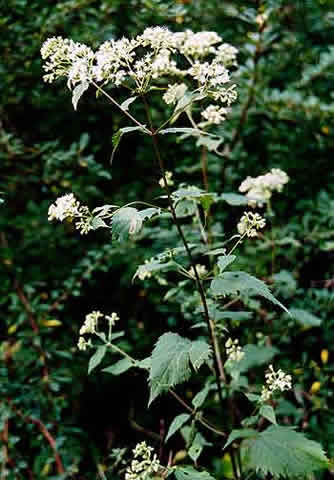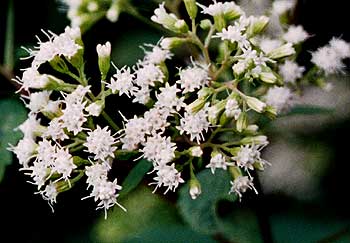An animal may die from eating either a large amount of white snakeroot at one time or small amounts over a long period. The eating of small quantities more or less continuously gives rise to the animal disease known as trembles. It is also the cause of the well-known and much-feared milk sickness of man -- a disease that is contracted from drinking milk or eating milk products from poisoned cows. Milk sickness claimed thousands of lives in the early 1800s, perhaps the most well-known victim being Abraham Lincoln's mother. Nursing calves and lambs may die from their mothers' milk contaminated with snakeroot even though the mother animals show no signs of poisoning. Cattle, horses, and sheep are the animals most often poisoned.
 White Snakeroot
White Snakeroot
Ageratina altissima var. altissima
Description
White snakeroot is an erect, branched herb usually about 3 feet tall but varying from 1 to 5 feet. It has slender, round stems and branches bearing pointed, oval, oppositely placed leaves. These leaves, 3 to 5 inches long and petioled, are sharply toothed on the margins. Each leaf has 3 main veins that show prominently on the underside. The roots are fibrous, coarse, and shallow.
In late summer, numerous small heads of minute white flowers appear at the top of the stem and the ends of the branches. These flower heads, except that they are white, are almost exactly like the flower heads of the familiar ageratum of gardens. Later the flowers are replaced in the heads by small black seeds each with a crown of soft white hairs.
